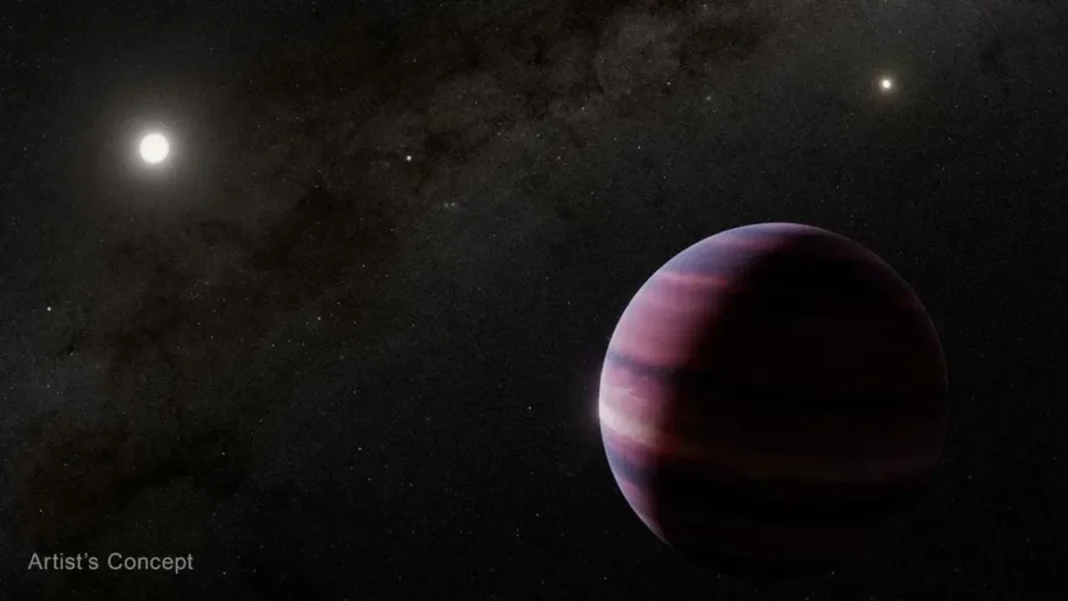Astronomers have made an exciting discovery using the James Webb Space Telescope (JWST) – a possible gas giant orbiting Alpha Centauri A, the closest star to our Sun. Located just 4 light-years away, this exoplanet, if confirmed, would be the closest to a Sun-like star ever imaged. This groundbreaking finding not only challenges current models of planetary formation in binary systems but also opens up new opportunities for studying nearby worlds.
The Alpha Centauri system is a triple star system, consisting of two Sun-like stars, Alpha Centauri A and B, and a smaller, dimmer red dwarf star, Proxima Centauri. For years, astronomers have been searching for planets in this system, hoping to find a world similar to Earth. However, due to the close proximity of the stars, it has been a challenging task.
But now, with the advanced capabilities of the JWST, astronomers have been able to spot a possible gas giant orbiting Alpha Centauri A. This is a significant achievement as it is the first time an exoplanet has been directly imaged in a binary star system. The planet, named Alpha Centauri A c, is estimated to be around 1.5 times the size of Jupiter and orbits its star at a distance of about 1.4 astronomical units (AU). This puts it in the habitable zone, where liquid water could potentially exist on its surface.
The discovery of Alpha Centauri A c has the potential to revolutionize our understanding of planetary formation in binary star systems. According to current models, it is believed that the gravitational pull of two stars in a binary system would disrupt the formation of planets. However, the presence of this gas giant challenges this theory and suggests that planetary formation in binary systems may be more common than previously thought.
Moreover, the proximity of this exoplanet to its star raises questions about its composition. Gas giants are typically found in the outer regions of a star’s planetary system, but Alpha Centauri A c is much closer to its star than expected. This could mean that the planet formed further out and migrated closer to its star, or it could have formed differently than other gas giants we have observed.
The discovery of Alpha Centauri A c also presents a unique opportunity for further study. Being the closest exoplanet to a Sun-like star, it will be easier for astronomers to gather more detailed information about its atmosphere and composition. This could provide valuable insights into the planet’s formation and evolution.
Moreover, the proximity of this exoplanet to Earth means that future missions could potentially send spacecraft to study it up close. This would be a groundbreaking achievement as it would be the first time a spacecraft has visited a planet outside of our solar system.
The discovery of Alpha Centauri A c is a testament to the capabilities of the JWST, which is set to launch in late 2021. This state-of-the-art telescope will be able to detect and study exoplanets in ways that were not possible before. With its advanced technology, it will be able to directly image exoplanets, study their atmospheres, and search for signs of life.
The finding also highlights the importance of international collaborations in the field of astronomy. The JWST is a joint project between NASA, the European Space Agency (ESA), and the Canadian Space Agency (CSA). This discovery would not have been possible without the combined efforts and expertise of scientists from around the world.
In conclusion, the possible gas giant orbiting Alpha Centauri A, only 4 light-years away, is a groundbreaking discovery that has the potential to challenge our current understanding of planetary formation in binary systems. It also presents new opportunities for studying nearby worlds and could pave the way for future missions to explore this exoplanet up close. With the launch of the JWST, we can expect more exciting discoveries in the field of exoplanet research, bringing us one step closer to unraveling the mysteries of the universe.



